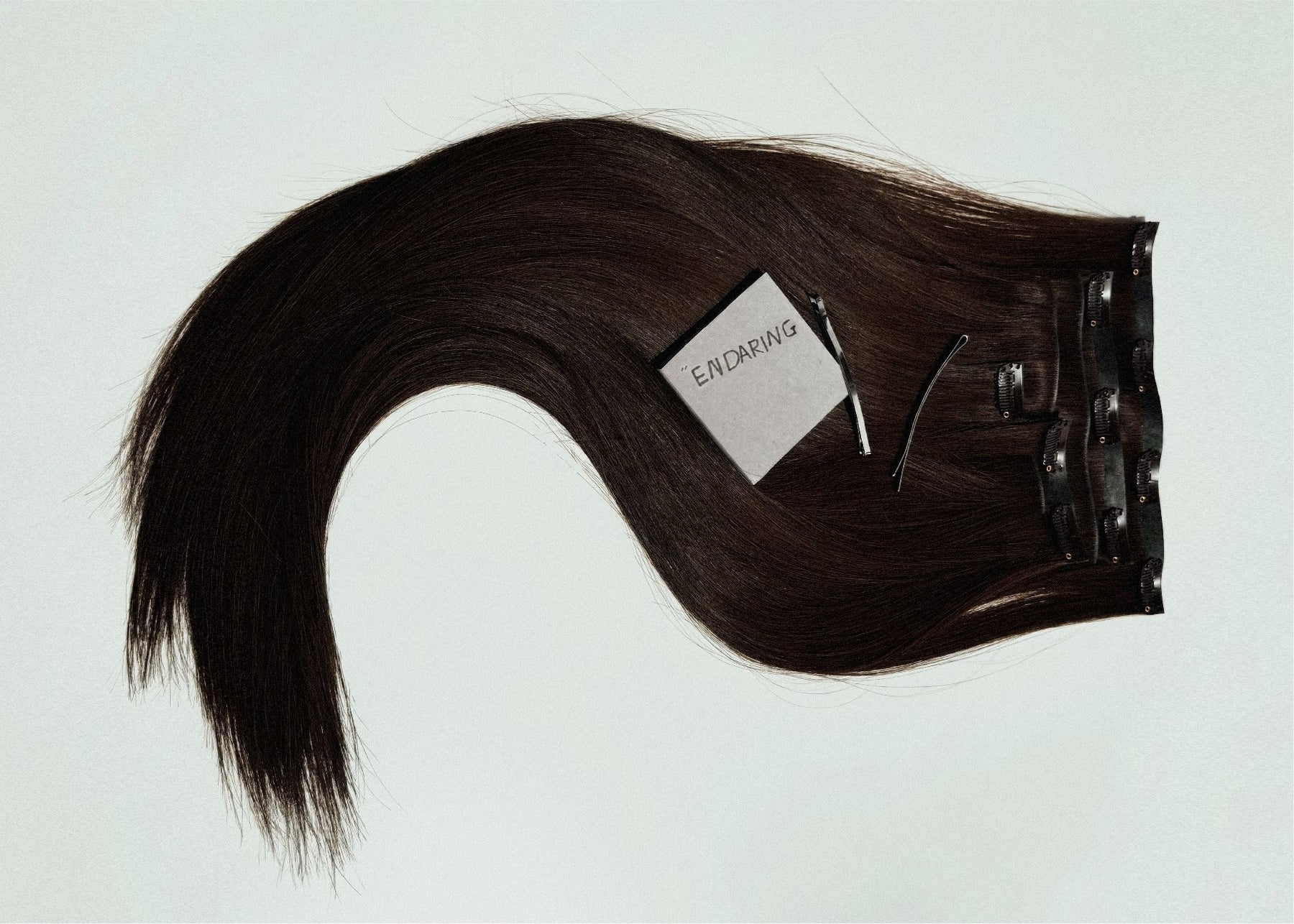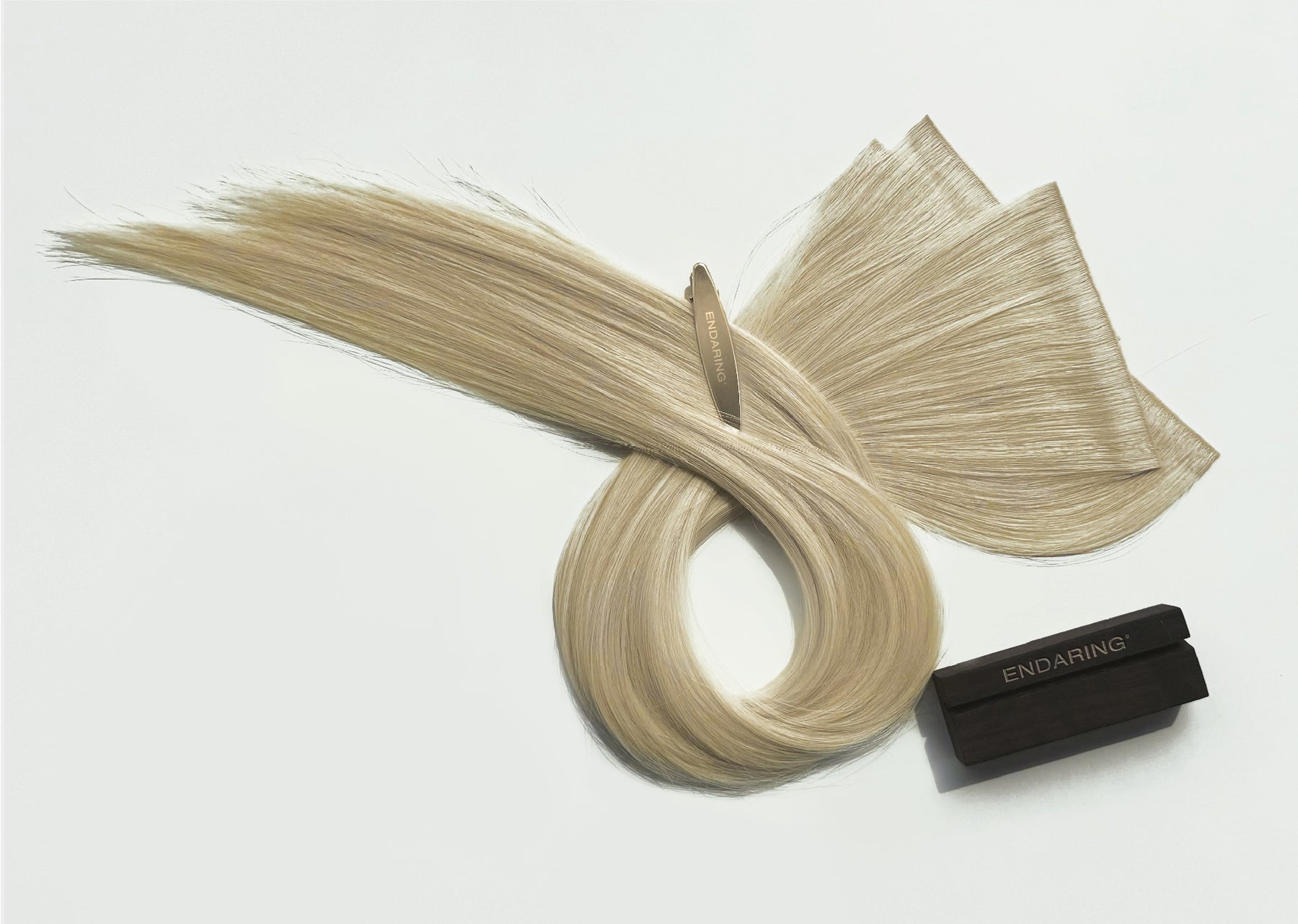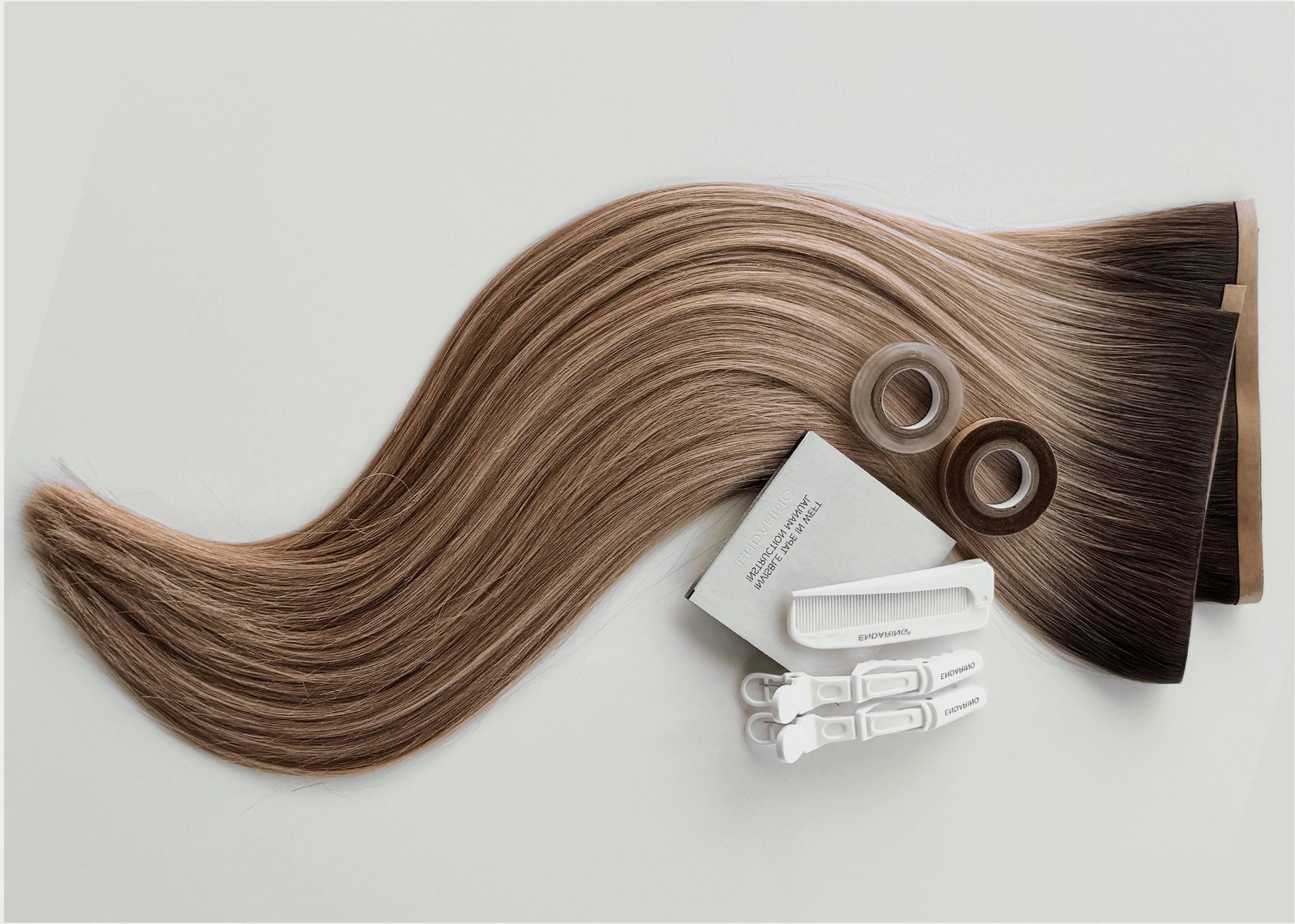In the following pages, we unravel the mysteries surrounding a common hair care query: How often should you cut your hair? From understanding the nuances of different hair types to debunking myths about growth acceleration through cutting, we're here to demystify the art and science of hair maintenance. So, whether you're a long-haired dreamer, a short-hair enthusiast, or somewhere in between, join us as we explore the intricacies of split ends, the impact of seasons on your locks, and the crucial signs your hair sends when it's time for a trim.
Signs Your Hair Needs a Trim:
Your hair communicates its needs more than you might think. Signs like split ends, excessive breakage, and difficulty styling are clear indicators that a trim is overdue.
- Split Ends:
Split ends are a clear sign that your hair is due for a trim. These occur when the protective outer layer of your hair cuticle wears away, causing the hair to split into two or more strands. Inspect the ends of your hair strands – if you notice them fraying or splitting, it's a signal that your hair needs a trim.
- Excessive Breakage:
Breakage, where your hair snaps or fractures, is another indicator that a trim is overdue. This can be caused by various factors such as heat damage, chemical treatments, or simply wear and tear. If you find an excessive amount of broken strands, especially towards the ends, it's time to schedule a trim to maintain the overall health of your hair.

- Difficulty Styling:
If you're experiencing increased difficulty styling your hair, it's a sign that it's lacking the structure and vitality that a trim can provide. Whether it's a struggle to achieve your favorite hairstyle, noticeable unevenness, or unruly tangles, these styling challenges suggest that your hair needs a fresh cut to restore manageability.
- Unmanageable Frizz:
Frizz that refuses to be tamed might indicate that your hair's cuticle layer is compromised. Trimming removes damaged and frayed ends, helping to smooth the overall texture and reduce frizz. If your usual anti-frizz products aren't doing the trick, a trim might be the solution to regain control over your locks.

- Lack of Shine and Luster:
Healthy hair has a natural shine and luster. If your hair looks dull and lacks vibrancy, it could be a sign that the ends are damaged and need to be trimmed. A trim removes the damaged portions, allowing the healthier, more vibrant hair to take center stage.
- Changes in Texture:
Pay attention to changes in the texture of your hair. If it feels rough, coarse, or straw-like, especially towards the ends, it's an indication that those areas are damaged. A trim helps maintain a consistent and smooth texture throughout your hair.
- Itchiness and Scalp Irritation:
Sometimes, an irritated scalp or persistent itchiness can be linked to damaged ends. As split ends travel up the hair shaft, they can cause discomfort and contribute to scalp issues. Addressing this with a trim not only benefits your hair's appearance but also contributes to a healthier scalp.
Recognizing these specific signs empowers you to proactively address the health of your hair. Regularly inspecting for split ends, monitoring breakage, and staying attuned to changes in texture and manageability ensures that you can take timely action to keep your locks in prime condition. Learning to interpret these signals is indeed the key to maintaining the overall health and vitality of your hair.
The Role of Hair Type in Frequency:
Straight, wavy, or curly – your hair type plays a pivotal role in determining how often you should trim. Tailoring your cutting schedule to your hair type ensures you're addressing its unique needs.
Straight Hair:
Straight hair tends to exhibit split ends less prominently than other textures due to its smooth and even structure. This means individuals with straight hair can generally extend the time between haircuts, aiming for a range of 10-12 weeks. The less visible nature of split ends allows for a more relaxed trimming schedule.
Curly Hair:

On the contrary, curly hair is more prone to dryness, breakage, and the notorious split ends. The natural twists and turns of curly hair make it harder for the scalp's natural oils to travel down the hair shaft, resulting in increased vulnerability. To combat this, individuals with curly hair benefit from more frequent trims, typically every 6-8 weeks, preventing split ends from traveling up the hair shaft and causing further damage.
Wavy Hair:
Wavy hair falls between straight and curly in terms of texture and maintenance needs. While not as prone to visible split ends as curly hair, it still benefits from regular trims to maintain its shape and health. Aim for a trimming schedule of around 8-10 weeks for wavy hair, ensuring a balance between preventing damage and allowing for growth.

Tailoring Your Cutting Schedule:
Recognizing the unique characteristics of your hair type is only the first step. Tailoring your cutting schedule involves finding the right balance based on your specific needs. Consider factors such as your hair's thickness, natural oils, and styling routine. Regularly reassessing and adjusting your cutting schedule ensures that you are addressing your hair's ever-changing requirements.
Long Hair, Short Hair, Same Rules?:
Long hair enthusiasts might assume they can space out their haircuts, but this isn't always the case. Longer hair, though less prone to split ends visibility, requires regular maintenance to prevent thinning and loss of volume. Conversely, short hair loses its shape more quickly, demanding more frequent trims to keep that stylish precision intact. The length of your locks indeed influences your optimal cutting frequency.
Long Hair Maintenance:
Long hair enthusiasts often believe they can extend the time between haircuts, assuming that the length protects against split-end visibility. While it's true that longer hair may not show split ends as visibly, it still requires regular maintenance. Long hair is prone to tangling, which, if left unaddressed, can lead to breakage. To prevent thinning and loss of volume, a regular cutting schedule, typically every 10-12 weeks, is recommended.
Preventing Thinning and Volume Loss:
Long hair, due to its length and weight, is more susceptible to thinning. Without regular trims, the ends can become weighed down, leading to a lack of volume and bounce. Timely haircuts help maintain a healthy thickness and prevent the hair from looking stringy or flat, preserving that lush, voluminous appearance.
Short Hair Precision:
On the flip side, short hair, while showcasing precision and style, loses its shape more quickly. The distinct lines and angles of a short haircut can become blurred without regular trims, compromising the overall look. To keep that sharp and stylish precision intact, individuals with short hair often need more frequent trims, typically every 4-8 weeks, to ensure the cut remains well-defined and flattering.
Balancing Length with Style:
The length of your locks indeed influences your optimal cutting frequency. It's not just about the aesthetics; it's about maintaining the health, shape, and style of your hair. Whether your mane cascades down your back or is cropped close to your head, finding the right balance between length and regular trims is crucial for achieving and preserving your desired look.
The Seasonal Haircut Guide:
Should the changing seasons influence how often you trim your locks? It's a question worth exploring. While some argue that seasonal changes impact hair health, the consensus is that individual hair needs and lifestyle play more significant roles. Understanding how factors like humidity, temperature, and personal habits affect your hair guides you in crafting a customized.
Humidity and Hair Health:
Humidity levels can influence the moisture content of your hair. In humid conditions, hair tends to absorb more moisture from the air, potentially leading to frizz and loss of style. Understanding how your hair reacts to different humidity levels allows you to adjust your trimming routine accordingly. For instance, individuals with curly hair might consider more frequent trims to combat frizz during humid seasons.
Temperature and Hair Resilience:
Extreme temperatures, whether hot or cold, can impact the resilience of your hair. Exposure to the sun's UV rays can lead to dryness and damage, while cold temperatures might contribute to increased dryness. Regular trims help manage these effects by removing damaged ends and maintaining the overall health of your hair, irrespective of the season.
Lifestyle Factors:
Lifestyle choices, such as frequent exposure to chlorinated water, salt water, or regular use of heated styling tools, can have a more significant impact on your hair than seasonal changes alone.
Crafting a Seasonal Trimming Routine:
Understanding how factors like humidity, temperature, and personal habits affect your hair guides you in crafting a seasonal trimming routine. If you live in an area with distinct seasons, you might consider more frequent trims during periods of extreme weather conditions. Alternatively, if your climate remains relatively consistent, adjusting your trimming schedule based on lifestyle changes becomes more relevant.





